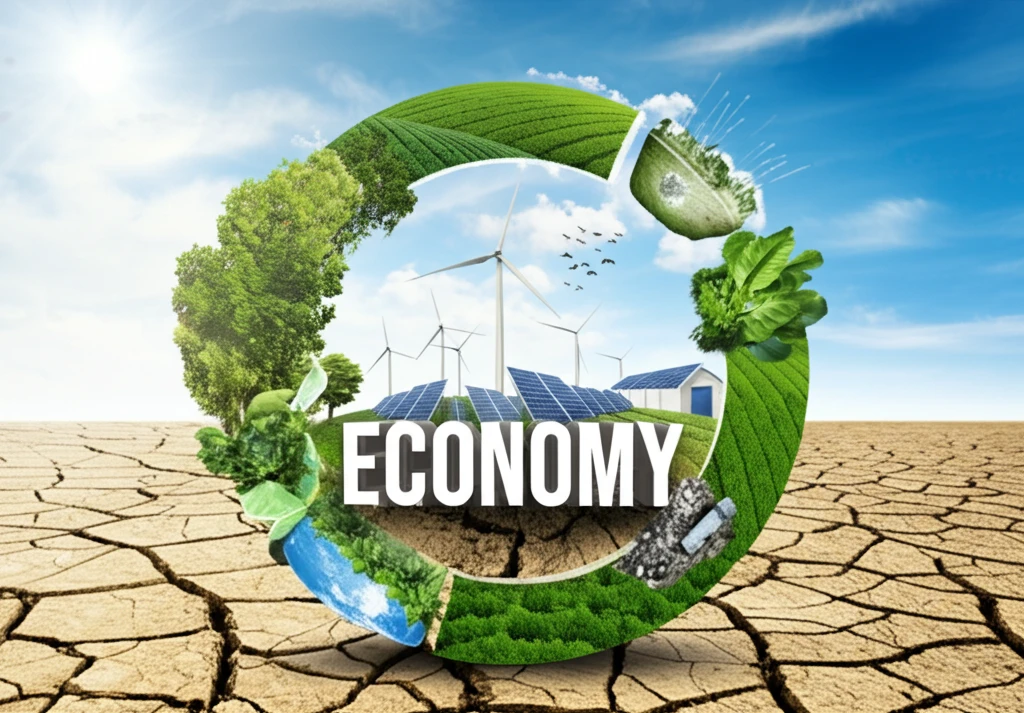
Closing the Loop: How Circular Economies Can Combat Poverty and Protect Our Planet
"Discover how a circular economy system is breaking the vicious cycle of ecological fragility and economic poverty, offering a sustainable path forward for vulnerable regions."
In many regions around the world, a troubling cycle persists: ecological fragility exacerbates economic hardship, and in turn, poverty drives further environmental degradation. This creates a vicious circle where exploited natural resources lead to environmental destruction and pollution, causing economic losses and deeper poverty. This dilemma, known as the environmental fragility-economic poverty vicious circle (FPVC), demands innovative solutions.
The concept of a circular economy offers a promising alternative. Unlike the traditional linear model of 'take-make-dispose,' a circular economy aims to minimize waste and maximize resource utilization. By creating closed-loop systems where waste from one industry becomes a resource for another, we can reduce environmental impact and foster economic opportunities.
This article will explore a successful case study of a circular economy system implemented in the Anding District of Northwest China, a region grappling with the challenges of FPVC. We will delve into the strategies employed, the benefits achieved, and the lessons learned, offering insights for other regions seeking to break free from this destructive cycle.
Breaking the Cycle: The CEEPS-SD Analysis in Anding District

The Anding District, located in Gansu Province, Northwest China, faces significant environmental and economic challenges. Characterized by an arid climate, limited rainfall, and severe soil erosion, the region has historically relied on agriculture as its primary industry. However, unsustainable farming practices have led to further environmental degradation, trapping the district in the FPVC.
- Livestock Faeces Pollution Elimination: Utilizing livestock manure for biogas production reduces pollution and provides a clean energy source.
- Water Saving: Implementing water-saving technologies and practices improves water utilization efficiency in this arid region.
- Agricultural Waste Recycling: Recycling agricultural waste, such as crop straw and potato residue, minimizes waste and creates valuable resources for other industries.
- Energy Conservation and Emission Reduction: Promoting biogas and solar energy reduces reliance on fossil fuels and lowers carbon emissions.
A Blueprint for a Sustainable Future
The success of the circular economy system in Anding District demonstrates the transformative potential of this approach in addressing the intertwined challenges of ecological fragility and economic poverty. By implementing closed-loop systems, promoting resource utilization, and fostering collaboration between industries and communities, we can create a more sustainable and equitable future for all.
